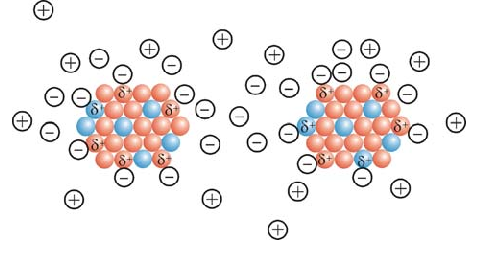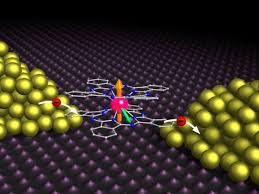Electromagnetic nanoparticles (electrical particles less than one hundred nanometers)
Researcher and author: Dr. ( Afshin Rashid)
Note: Surface coating is an inseparable component of electromagnetic nanoparticles so that they can be used. Although nanoparticles are not attracted to each other due to their super paramagnetic properties, but due to the high energy of the surfaces, electromagnetic nanoparticles tend to accumulate .
Metal alloys or bimetallic nanoparticles have a high superparamagnetic property, which makes them suitable for electromagnetic nanomolecules or electromagnetic nanocarriers . In addition to this, the electromagnetic property of the surface of these nanoparticles allows surface active substances to be placed on the surface of the nanoparticles , which can be used to dissolve the nanoparticles . The electrostatic stability of nanomolecules is not suitable for nanoparticles; Although the repulsion of charges on the surface of nanoparticles can prevent their accumulation, but in the presence of a catalyst or other electrolytes in the internal environment of electromagnetic nanoparticles, these charges are neutralized. Electromagnetic properties (Active) in the coating of nanoparticles, such as a barrier of accumulation They prevent and chemical functionalization creates suitable and efficient properties for nanoparticles . Molecular weight and geometrical orientation exist on the surface of nanoparticles in various forms. Layers that make electromagnetic nanoparticles fully active. It prevents nanoparticles from accumulating. In addition to organic coatings, the core-shell structure is also used for optimal application of electromagnetic nanoparticles . The engineering of the structure of magnetic nanoparticles is the functionalization of the particle surfaces, which can have several agents or several (ligands). Uncoated and coated nanoparticles can absorb (bimetallic) nanoparticles with a variety of electromagnetic molecules and create an active process.
Electromagnetic nanoparticles are particles less than one hundred nanometers that have magnetic properties in the presence of an external magnetic field. The simplest structure of nanoparticles consists of a magnetic core (such as iron oxide, nickel and cobalt) and various non-magnetic coatings of chemical compounds in nano-electromagnetic materials, the molecules and atoms that make them have magnetic properties. In simpler terms, elements such as iron, cobalt, nickel and their alloys that are attracted by magnets are called nanomagnetic materials.
Conclusion :
The classification of nano-magnetic materials is based on the receptivity of nano-magnetic particles (magnetization ability of nano-material particles). Based on this, the materials are classified into three groups: nano-ferromagnetism, nano-paramagnetism and nano-diamagnetism. The process of dipole (bimetallic) and multi-metallic moment in nanoparticles of active nanodiamagnetic materials (electromagnetic nanoparticles ) is zero and in the presence of Magnetic field, bipolar moment (bimetallic) is induced in them; But the direction of these induced bipolars is opposite to the direction of the external magnetic field.
Researcher and author: Dr. ( Afshin Rashid)
Specialized doctorate in nano-microelectronics





